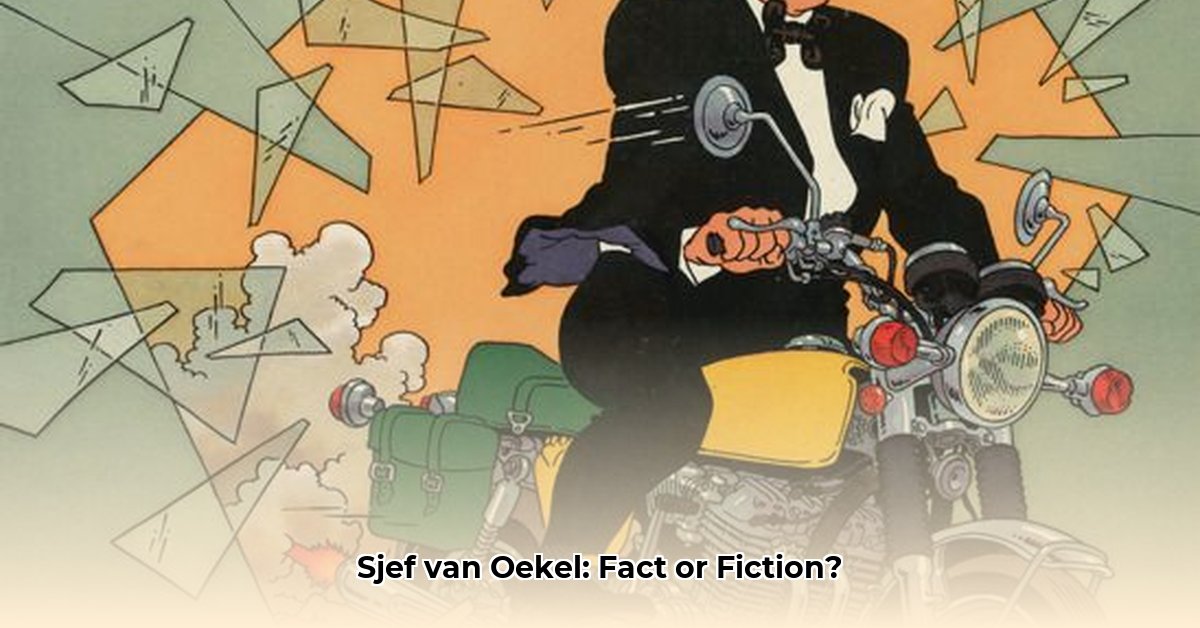
Wie Was De Man Achter Personage Sjef Van Oekel? (Who Was the Man Behind the Character Sjef van Oekel?)
So, you reckon you know Sjef van Oekel? Think again, tjommie! This ain't just about some grumpy old fella on the telly; he's become a legend, his catchphrases still echoing, his image plastered everywhere. This story's about the brains behind Sjef – Wim T. Schippers – and the chap who brought him to life, Dolf Brouwers. We'll delve into Sjef's origins, the legal ruckus over his image rights, and his surprisingly chart-topping singing career. From his first TV appearance to becoming a national icon, we'll unpack why Sjef remains such a jol in Dutch culture. Get ready for the full Sjef van Oekel story – the man, the myth, the entire shebang.
The Grumpy Old Man's Legal Tussle
Sjef wasn't born in a hospital, nee, he sprung forth, fully formed, from the fertile mind of Wim T. Schippers. Initially a bit player, this grumpy old codger, with his quirky blend of Dutch and Flemish – a linguistic potjiekos that somehow worked perfectly – quickly became a star. His catchphrases, the kind that burrow into your brain like an earworm, and that perpetually sour expression resonated deeply. But this unexpected fame brewed a storm – a proper legal klap, in fact.
The rapid ascent of Sjef to fame created a clash between Schippers, the visionary behind the character, and Brouwers, the actor who imbued him with life. Their disagreement escalated into a full-blown legal battle over ownership. It wasn't just about the ka-ching; it was about creative control, about the very soul of the character. Who got to decide what Sjef did, said, and how he was portrayed? The courts intervened, issuing a ruling that, amongst other things, restricted Sjef's appearances in any "obscene or pornographic" material (a pretty reasonable request for such a beloved character). This legal drama became a pivotal moment, shaping Sjef's portrayal for generations to come.
From TV Screens to Top of the Charts: Sjef's Unexpected Success
Sjef's impact wasn't limited to the small screen, ag nê. His songs – tunes like "Zuurkool met vette Jus" and "Gehaakte beddesprei" – became unexpected hits. These weren't mere background noise; they were memorable sing-alongs. This musical success proved Sjef's appeal extended beyond comedy; he could make you laugh and tap your feet simultaneously! He popped up everywhere, even in the popular Kiekeboes comic strip, cementing his status as a cultural icon. But why this enduring popularity? Was it the catchy tunes, or something deeper? Perhaps a reflection of everyday struggles? Maybe he was simply the perfect comic relief society needed. Or maybe it was his unique linguistic blend, appealing to a broader audience.
The Ever-Evolving Grumpy Old Man: Adapting to the Times
Sjef's journey wasn't a straight line; it was more like a padkos picnic with plenty of detours. As he appeared on different platforms, his character subtly shifted. His thick Flemish accent, for instance, sometimes faded to broaden his appeal. These adjustments – reflecting the creative process – raise questions: did they enhance Sjef, or dilute his essence? Did they improve relatability, or diminish uniqueness? This is a debate that continues among fans and experts alike – a testament to his lasting impact.
The Enduring Charm of Sjef: Is It Just the Grumpiness?
So, what's the secret to Sjef's lasting appeal? His humour is certainly a major factor, but there's more to it. Some argue it's his unique blend of Dutch and Flemish cultures. Others point to the relatability of his grumpiness – many people share his frustrations. Still others highlight the sheer absurdity of a grumpy old man becoming a cultural icon. Whatever the reason, his popularity remains a fascinating case study. How many other characters enjoy such a long and successful run? The answer, my friends, is far too few!
Sjef's Influence: A Timeline of Grumpy Greatness
| Year | Event | Significance |
|---|---|---|
| 1970s | First appearance in Wim T. Schippers' work | The humble beginnings of a legend. |
| 1980s | Sjef's unexpected popularity explodes | Leads to spin-offs, merchandise, and a national obsession. |
| 1989 | Legal battle between Schippers and Brouwers begins | A significant turning point, impacting Sjef's future and image rights. |
| 1990s | Court ruling restricts Sjef's portrayal | Shapes how the character is depicted moving forward. |
| 1990s | Unforeseen musical success | Showcases Sjef's appeal beyond comedy, reaching a wider audience. |
| 2000s | Appears in diverse media (e.g., Kiekeboes) | Solidifies his status as an enduring symbol in Dutch popular culture. |
The story of Sjef van Oekel isn't just about a grumpy old man; it's a captivating tale of creativity, conflict, and cultural impact. His legacy deserves further exploration and understanding. The man – or rather, the character – behind the legend remains a compelling subject for study.